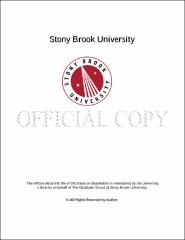| dcterms.abstract | Over the past decade wireless devices, such as smart phones, tablets and laptops have gained tremendous popularity and proliferation worldwide. Additionally, both the WiFi technology and Cellular networks have observed signicant advancements from dierent aspects, with the aim of achieving better network throughput and user experience. Hence, it becomes vital to conduct new, principled studies in such state-of-the-art networks, quantify the true benets attained, identify previously unknown problems, and propose, develop and evaluate solutions to these problems, that could further improve performance. To this end, in the rst part of this dissertation, we focus on Next- Generation WLANs. The key feature of these networks is that now they are capable of supporting very high physical layer (PHY) data rates (i.e., 1 Gbps and up). While the PHY developments are meant to improve network performance, we nd that MAC schemes face new challenges in such settings, and thus, fall short in utilizing the underlying high capacity channel well. We verify the problem of severe throughput degradation in such networks, when the entire channel is used as a single resource by MAC protocols similar to the standard IEEE 802.11 CSMA/CA. Additionally, we nd that some related promising MAC solutions have not been extensively studied before in this context. To address this gap, we thoroughly study these MAC schemes, under a wide range of settings, via both analytical modeling and simulations. We identify new issues that can cause drastic under-utilization of the high speed channel, and/or unfairness, in realistic settings, with these schemes. The insights obtained by our studies motivate the need for developing better, new MAC protocols for high data rate WLANs. To achieve this goal, we propose and promote the idea of adaptively channelizing the spectrum, and we develop new MAC techniques to enhance performance in emerging high data rate WLANs. We show via extensive simulations, that our MAC schemes can signicantly outperform existing schemes, in dierent network topologies and trac scenarios, in terms of channel utilization, per-user-throughput and fairness. In the second part of this dissertation, we focus on an emerging and important, yet unexplored, area in Cellular Networks, Mobile Virtual Network Operators or MVNOs, that operate on top of existing cellular infrastructures. While MVNOs have shown signicant growth in the US and elsewhere in the past two years and have been successful in attracting customers, there is no prior systematic study to understand performance in such networks. To the best of our knowledge, we present the rst systematic measurement study to shed light on this emerging phenomenon. We design and develop measurement techniques and testbeds with Android smartphones. We take approaches to avoid measurement bias, and we study in detail the performance of 3 key applications: web access, video streaming and voice, in 2 popular MVNO families (a total of 8 carriers) in the US. Interestingly, we nd that some MVNOs do indeed exhibit signicant performance degradation and that there are key dierences between the two MVNO families. Our measurements, analysis and new insights are benecial to not only end-users, but also to MVNOs, underlying carriers and application developers. | |

